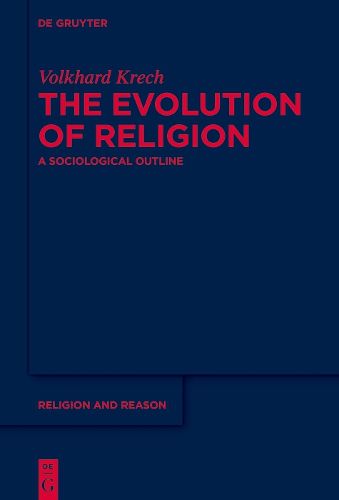Readings Newsletter
Become a Readings Member to make your shopping experience even easier.
Sign in or sign up for free!
You’re not far away from qualifying for FREE standard shipping within Australia
You’ve qualified for FREE standard shipping within Australia
The cart is loading…






How can the emergence of religion be understood consistently as a genuinely social process without resorting to phenomenological, intellectual-historical, biological, or cognitive-scientific approaches?
To answer this question, the book refers to three theories: theory of evolution, systems theory, and semiotics. Against this background, it traces the emergence of religion from general societal processes and the differentiation from its environment (other societal subsystems, mental systems, organic and physical conditions). It is shown how the religious system draws information from its environment and at the same time provides its environment with meanings.
Applying the theories mentioned, four dimensions are distinguished in which religion evolves: experience, embodiment, cognition, and regulation. Overall, the approach understands religion as a specific sign system that deals with indeterminable contingency with the help of the distinction between known immanence and absolute transcendence.
The book offers a way out of the false alternative of either following religious self-descriptions or explaining away religion and completely dissolving it into non-religious factors, such as political, economic, or mental circumstances.
$9.00 standard shipping within Australia
FREE standard shipping within Australia for orders over $100.00
Express & International shipping calculated at checkout
Stock availability can be subject to change without notice. We recommend calling the shop or contacting our online team to check availability of low stock items. Please see our Shopping Online page for more details.
How can the emergence of religion be understood consistently as a genuinely social process without resorting to phenomenological, intellectual-historical, biological, or cognitive-scientific approaches?
To answer this question, the book refers to three theories: theory of evolution, systems theory, and semiotics. Against this background, it traces the emergence of religion from general societal processes and the differentiation from its environment (other societal subsystems, mental systems, organic and physical conditions). It is shown how the religious system draws information from its environment and at the same time provides its environment with meanings.
Applying the theories mentioned, four dimensions are distinguished in which religion evolves: experience, embodiment, cognition, and regulation. Overall, the approach understands religion as a specific sign system that deals with indeterminable contingency with the help of the distinction between known immanence and absolute transcendence.
The book offers a way out of the false alternative of either following religious self-descriptions or explaining away religion and completely dissolving it into non-religious factors, such as political, economic, or mental circumstances.